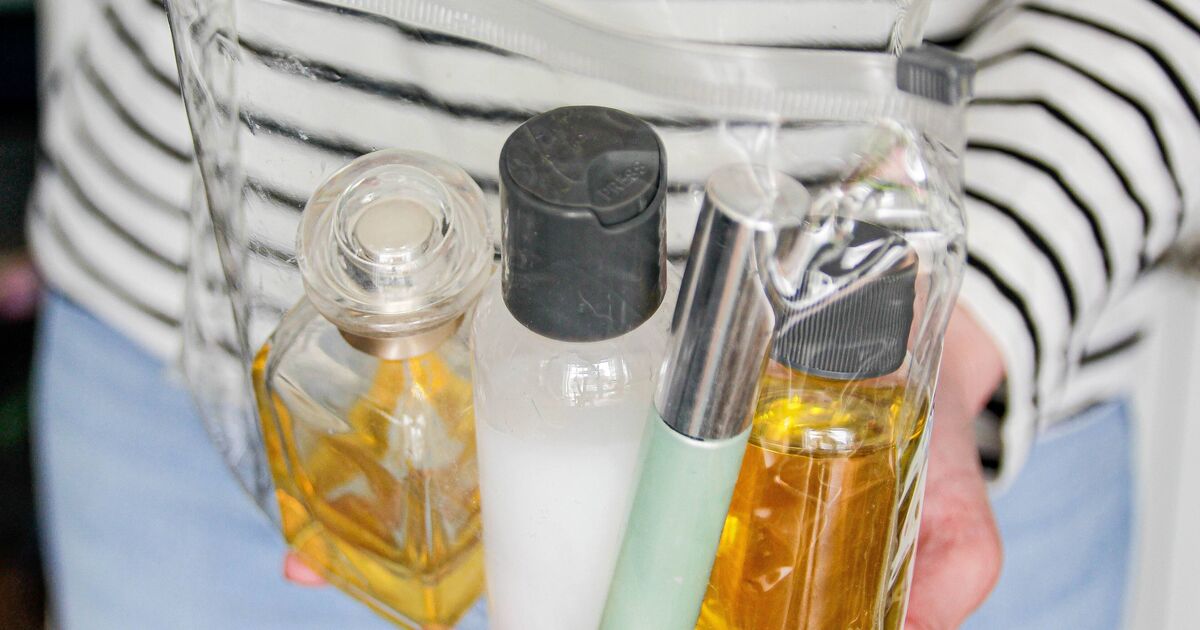

Knowing what counts as a liquid for carry-on luggage might seem straightforward, but there are a few rules that could trip you up. With summer on the horizon and Brits preparing for overseas holidays, we've put together some vital tips for navigating airport security.
Firstly, it's crucial to grasp the basics. If you opt to bring any liquids in your hand luggage, most UK airports stipulate that containers should not exceed 100ml and must be housed in a single, clear plastic bag measuring approximately 20cm x 20cm.
The Government's website further clarifies that all items must fit 'comfortably inside the bag', allowing it to be sealed. Avoid the hassle and don't attempt to seal it by knotting the top - it won't pass.
Things get murkier when deciding what should and shouldn't go into the bag. While it's fairly evident that perfumes, creams and contact lens solutions need to be included, some other items aren't so obvious.
Consider certain thick foodstuffs like jams, marmalades, and syrups. These are classified as liquids even though they're not as fluid as hairsprays, aerosol deodorants, or water itself.
It's worth bearing in mind that pastes, such as tomato or toothpaste, also qualify as liquids and should be placed in the plastic bag. However, frozen liquids are entirely prohibited, even if they fit within the 20cm x 20cm container.
The UK Government's complete list of what's considered hand luggage liquid is below:
Interestingly, items like solid deodorant sticks, soap bars, wet wipes and lip balms are not typically classified as liquids. As such, they do not usually need to be placed in the clear bag.
Different regulations apply to medicines, medical equipment, and dietary products. Passengers may carry 'essential medicines of more than 100ml, including liquid dietary foodstuffs and inhalers', but they must provide proof of prescription.
Parents travelling with infants can also bring sufficient food, milk and sterilised water for the journey. Breast milk containers must not exceed 2,000 ml and will be screened at security.
"When travelling with a baby you're allowed to take enough baby food, baby milk and sterilised water for the journey," the Government states. "There is no legal limit to how much you can take however check with your airport before you travel.
"You can carry breast milk in hand luggage even if you're not travelling with a baby. You cannot carry frozen breast milk in hand luggage."
For more information, visit GOV.UK. Before your departure day, it's also important to review the specific guidelines for your airport, as some rules may differ.